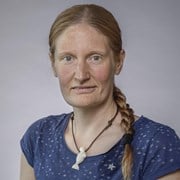Today’s AI is artificial intelligence, but it just talks. It doesn’t make a single decision, and it doesn’t make things happen. We’re talking about ChatGPT, Claude, Deepseek, Gemini, Grok, Meta AI and the other AI variants that you hear about all the time. They are just language models.
Now a brand new centre is opening to develop artificial intelligence that can be used for something completely different. The centre has received a solid part of the AI research NOK billion from the Norwegian government. SINTEF and NTNU are co-leading the centre, which will study how AI can be used to make decisions about everything from health to industry and energy.
“There’s been so much focus on language models,” says Signe Riemer-Sørensen. She is a research manager at SINTEF and one of two centre directors in the newly established Norwegian Centre on AI-decisions.
Calculating the right dosage of medicine
“In reality, completely different types of artificial intelligence actually offer the greatest potential. Linking AI to industry and automating large processes is when we’ll start to see a gain,” says Riemer-Sørensen.
She uses health and energy as examples. Imagine that you have diabetes and that you keep it in check with insulin. You need to know exactly how much insulin you need.
“You take insulin based on your bodily measurements. Actually, you should have insulin based on what you’re about to do. Some researchers are focusing on this future-based method, but it is still far from good enough. Artificial intelligence can create models of people and make these kinds of decisions about treatment,” Riemer-Sørensen says.
Managing electricity consumption
Another way that AI can tidy things up where humans can’t so far is in energy production. If you have solar cells on your roof, they tend to produce the most electricity exactly when you need it the least.
“It’s difficult to get rid of the extra electricity on the grid, because it can become overloaded. AI can provide better control all the way down to the solar cell level and out to the grid and manage how and when we use the electricity,” she says.
Many small models
“The whole point is that we shouldn’t just build one model that handles everything at once. We should build small models that handle individual tasks and that can communicate with each other. Even the language models are moving in the direction of many small, specialized models,” says Riemer-Sørensen.
The researchers at the SINTEF- and NTNU-led AI centre will focus on building these kinds of models that take care of specialized tasks. They will also build models that decide whether they need help from other AI models that specialize in other tasks.
“We have more than 50 partners from industry and the public sector on board. In addition to the research, we’re looking at what needs to be in place for people to use this artificial intelligence,” she says.
The similarities are greater than the differences in some places. For example, even though diabetes patients and the power grid are very different, the principle for how artificial intelligence can control what should happen is very similar. This means that researchers, technology experts and end users can learn a lot from each other.

Where should the snowploughs be sent first? Artificial intelligence can make the decision independently. Photo: Bård Asle Nordbø, Norwegian Public Roads Administration
Making AI more independent
The key is autonomy, explains Sebastien Gros.
Gros is a professor at NTNU and co-leads the new centre with Riemer-Sørensen.
Whether deciding where the snowplough or the gritter should be sent out first, or which doctor the patient should talk to, AI that can make independent decisions is needed.
“Some partners at the centre want recommendations and alerts that a decision needs to be made. Others want full autonomy where the algorithms make the decisions,” says Gros.
The problems can still be quite similar: For example, the researchers have put energy professionals and the Norwegian Public Roads Administration around the same table, only to find out that they actually want to solve the same task.
Setting up autonomous AI systems like this is already possible with the technology that exists today.
“We can do it with sufficient data. Some of our partners have such systems in the energy market now,” he says.
Autonomous AI models are easier to create when the data involves clear numbers. If the basis for decisions involves text – like a handwritten note from a doctor about something a patient has said verbally during a consultation – then the task becomes more challenging.
“What we have to do in any case is to sort data, predict results and use them to make decisions,” says Gros.
Facts about the Norwegian Centre on AI for Decisions:
- The centre is one of six national Norwegian centres sharing the ‘AI billion’. The government has allocated at least one billion kroner over five years for research on artificial intelligence.
- The centre will combine different AI techniques to interpret sensor data from physical processes in industry and critical infrastructure. It explores how AI can be used for decision support where trust in decisions is maintained.
- Areas of application are AI-based decision systems for better decisions in sectors such as energy, health, logistics and the process industry.
- Research partners are NTNU, SINTEF, SINTEF Energy, SINTEF Manufacturing, SINTEF Ocean, IFE, NMBU, Norce Research, SimulaMET, TØI, UiO, Norwegian Meteorological Institute and international partners.
- User partners are Å Energi, Aker BP, Aneo, AtB, Autronica Fire & Security, Avinor, BAMA Gruppen, Benteler Automotive Raufoss, Borregaard, Cyberforsvaret, Cybernetica, DNV, Elkem, Equinor Energy, Gassco, Glitre Nett, Haste, Havtil, Helseplattformen, House of Knowledge, Hydro Aluminium, IC Technology, ITS Norway, Jotun, Kongsberg Discovery, Kongsberg Maritime, KPMG, KS-Kommunesektorens Organisasjon, Mesta, Microsoft Norway, Nord Pool, Norhead, Nye Veier, Oslo Municipality, Posten Bring, Properate, Senti sytems, Skagerak Kraft, Smart Innovation Norway, Solution Seeker, SparkPark, St. Olavs Hospital, Norwegian Public Roads Administration, Statkraft, Statnett, Statsbygg, Sykehusapotekene, Sykehuset Østfold, Sykehuspartner, Tensio, Trondheim Municipality, Veidekke Entreprenør, Vianode.
- Project managers: Sebastian Gros (NTNU) and Signe Riemer-Sørensen (SINTEF).


